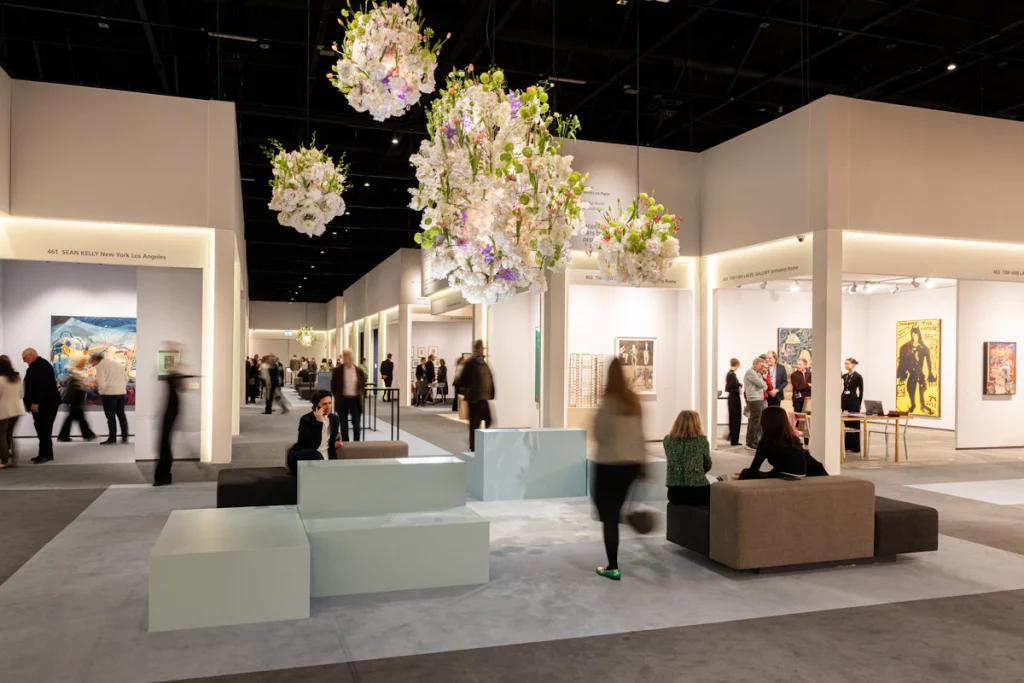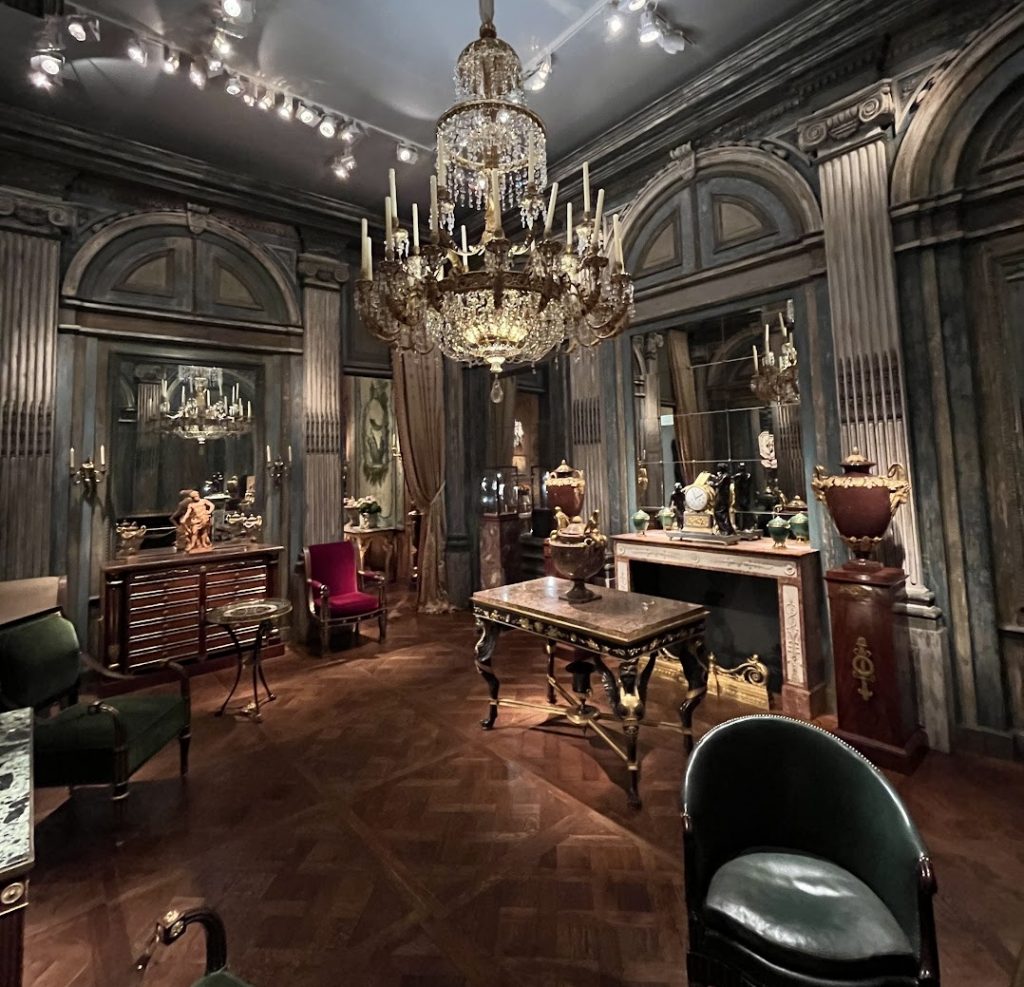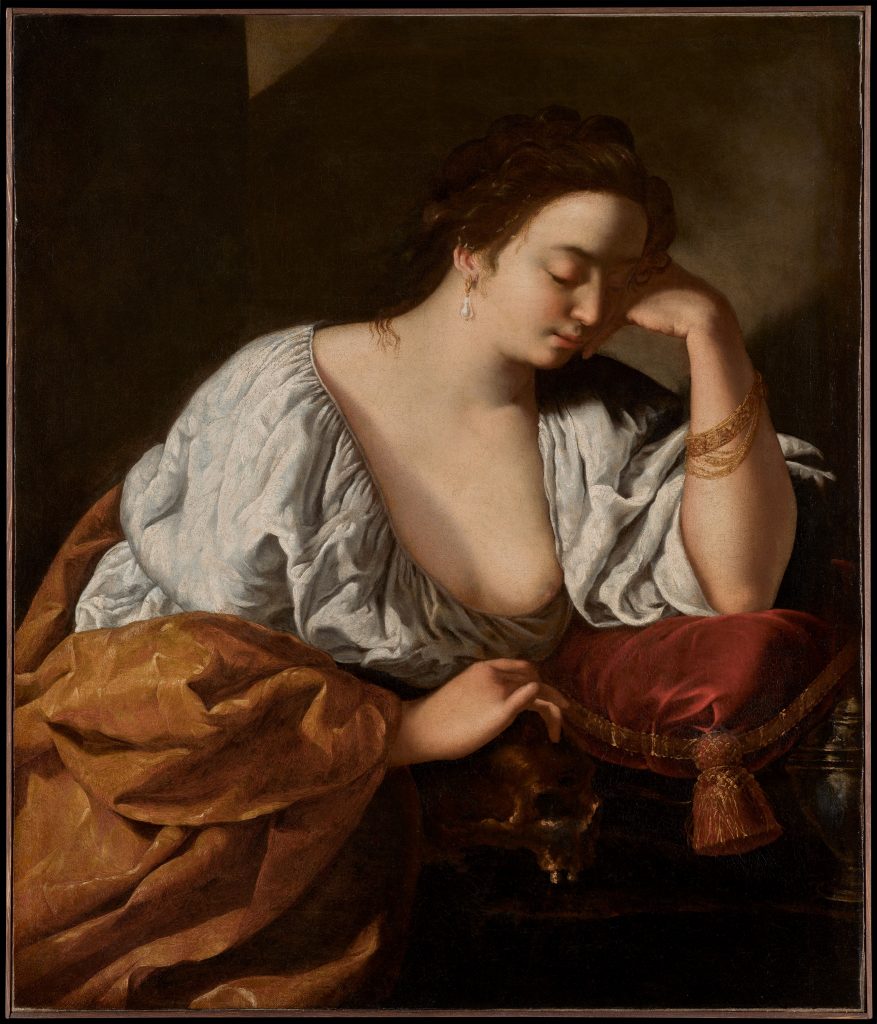Art Fairs
Women Artists Take Center Stage at TEFAF Maastricht
The priciest piece at the fair, a $48 million Wassily Kandinsky, is still seeking a buyer.

The priciest piece at the fair, a $48 million Wassily Kandinsky, is still seeking a buyer.

Claire Wrathall

The president of TEFAF Maastricht, Hidde van Seggelen, calls the annual fair in that southern Dutch city “the biggest place of exchange for the world’s great museums, top collectors, and best dealers,” and at its preview on Thursday and Friday, the action backed up that claim.
All of the talk that first evening was about the sale of a painting by the Dutch artist Gesina ter Borch (1631–90), sister of the more famous “Golden Age” painter Gerard ter Borch, to the Rijksmuseum by the Amsterdam gallery Zebregs & Röell. It is a posthumous portrait of her younger brother, Moses, and the only work she signed. Its price: €3 million (about $3.3 million).
However, that was not the most expensive transaction of the VIP preview. That title belongs to Claude Monet’s 1886 painting The Willows, Giverny, which was brought to the eight-day fair by the New Orleans gallery M.S. Rau, exhibiting at TEFAF for the first time, with a booth filled with works by the likes of Magritte, Manet, Matisse, Picasso, and Renoir. (The price paid for the Monet remains undisclosed.)
The priciest piece on offer at M.S. Rau is a Degas pastel, Ukrainian Dancers (ca. 1899), that was last seen in public at the J. Paul Getty Museum in Los Angeles; the gallery is asking €18.4 million ($20 million). M.S. Rau also has a rare painting by Vincent van Gogh, Tête de paysanne à la coiffe blanche (1884), priced at €4.5 million ($4.9 million), which sold by the end of the weekend to a private museum. One Dutch visitor remembered it as having once belonged to his great grandmother. Happily, it is now going to a museum.
Looking at art in a commercial context is entirely different from seeing it in a public institution. Here, you know that a work may not be seen again in public in your lifetime. Gazing at Berthe Morisot’s 1889 Les Aloès at M.S. Rau—a view of a succulent-filled garden in the South of France that somehow prefigures Georgia O’Keeffe’s plant paintings—I found myself hoping it does not disappear into a private residence or a freeport vault.
There is no other art fair quite like TEFAF. First, there is its sheer scope: 7,000 years of international art from antiquity to the present, as well as furniture, design, and jewelry, offered by 272 galleries from 22 countries, every object vetted by a committee of experts overseen by Wim Pijbes, a former general director of the Rijksmuseum. (This year, about 70 works raised questions that could not be answered and had to be withdrawn, per the rules of the fair, which runs through Thursday.)
Then there is its setting. MECC Maastricht may be an unlovely exhibition hall, but each March, it is transformed into what is in effect an encyclopedic museum, adorned with fabulous flowers: 75,000 tulips, dahlias, hydrangeas, ranunculus, and orchids arranged in billowing clouds.

Paris’s Steinitz gallery has made its booth into an opulent French suite. Photo by Andrew Russeth
Great care goes into the design of the stands, too. This year, the Parisian galleries Steinitz and Christophe de Quénetain have recreated suites of formal French salons, complete with chimney pieces, parquet flooring, rococo boiserie, swag drapes, chandeliers, and a lot of ormolu furniture. A 17th-century polychrome wooden ceiling hangs above the booth of the Portuguese baroque specialist São Roque, of Lisbon. The Dutch dealer Morentz has created a mid-century lounge, furnished with pieces by George Nakashima, Josef Frank, Paavo Tynell, and Gianfranco Fini, its focal point an immense elliptical hammered-copper fireplace by Franco Campo.
Visitors are back in force, as well. Overall attendance on the two VIP preview days was up 20 percent on last year, boosted by more than 300 museum directors, 650 curators, and 40 museum patron groups from, among other U.S. institutions, the Museum of Modern Art, the Metropolitan Museum of Art, the Museum of Fine Arts Boston, the Art Institute of Chicago, the Cleveland Museum of Art, the Dallas Museum of Art, the National Gallery of Art in Washington, D.C., and the Getty, not to mention the Louvre, the Musée d’Orsay, the Prado, the British Museum, Hong Kong’s M+, and Abu Dhabi’s Zayed National Museum.
It is a crowd more conservatively attired than at other art fairs, and also more bejeweled, in keeping with the splendor of the jewelry on sale, which ranges chronologically from an ancient Egyptian emerald udjat eye amulet (offered, unexpectedly, by the New York dealer in contemporary art Sean Kelly) to a new €6 million ($6.6 million) black-iron-and-marquise-diamond cuff on the Hemmerle stand. Didier, for its part, has Leonor Fini’s Sujet en or, an 18-carat gold tiara shaped like a pair of bull’s horns, and a pendant resembling the blade of a pick that Louise Bourgeois made in 1948 “as a protest against the subjugation of women,” as the London gallery puts it.
The standout in Kelly’s booth is Kehinde Wiley’s 2020 swagger-style portrait of Issa Diatta holding a sword ($650,000). Next to it is an actual sword, forged in England around 1800 and belonging to another exhibitor, the British armor specialist Peter Finer.
Inventive juxtapositions of tangentially complementary works are quite a feature this year. Kelly has also paired a 2022 glass mosaic by the Pakistani-American artist Shazia Sikander with a 17th-century Deccan miniature, as well as a new wall-hung work by Idris Khan entitled Greed Is a Sign of Poverty with a 10th-century Samanid bowl bearing the same inscription.
While key dealers of contemporary art, like White Cube, Galleria Continua, and Mennour, have become a stronger presence at TEFAF in recent years, it was specialists in older paintings causing a stir.
The most expensive work on offer is Wassily Kandinsky’s Murnau mit Kirche II (Murnau with Chuch II), painted in 1910, just before he pioneered abstraction. It was acquired last year by Montreal-based Landau Fine Art at Sotheby’s London for £37.2 million (about $47.7 million). Its asking price is undisclosed, and as of Sunday night, it had yet to find a taker.
Elsewhere, there are museum-quality works by a host of Old Masters, including van der Ast, Cranach, Fragonard, Hals, Tiepolo, Titian (a rare 12-panel woodcut print, The Submersion of Pharoah’s Army in the Red Sea, for which Manhattan dealer David Tunick is asking “about a million”), Turner, van Dyck, and Zurbarán, the latter an exquisite still life, priced at $2.8 million by Nicholas Hall, also of New York.

Artemisia Gentileschi’s The Penitent Magdalene (ca. 1626), on offer at the stand of Robilant + Voena. Photo courtesy of Robilant + Voena.
But the overriding theme of this TEFAF is works by women. “My focus this year is female,” said Paul Smeets, of the Geneva gallery Rob Smeets. “It took me three years to arrive at this selection” of 17th- and 18-century works by Rosalba Carriera, Diana de Rosa (aka Annella), Clémence Sophie de Sermezy, Giovanna Garzoni (an exquisite tempera and pencil drawing of an apple), Angelica Kauffman, and Lavinia Fontana, whose sympathetic, if disquieting portrait of Antonietta Gonzalvus (circa 1594), is among the most striking works in the whole fair.
Like her father, Petrus Gonsalvus (who was born of Guanche heritage in Tenerife, Spain, and became a gentleman in the court of Henri II of France), and three of her siblings, Antoinetta suffered from hypertrichosis, which causes the face and body to be covered in excessive hair. (It’s thought her father’s marriage to a French woman, Catherine Raffelin, inspired Charles Perrault’s fairy tale “Beauty and the Beast.”) Fontana depicts her with such sensitivity, though, that her condition seems almost incidental.
It is priced at €4.5 million (about $4.92 million), quite a hike from the €1.25 million ($1.37 million) it realized at the French auction house Rouillac last year. Even so, its journey to TEFAF is not as sensational as that of The Penitent Magdalene (circa 1626), which Robilant + Voena is offering for $7 million. In August 2021, it came up for sale at an auction in Sarasota, Florida, with an estimate of $1,000–$1,500 and went for $129,150.
Thanks to radiographic, stratigraphic, pigment, and inventory analysis, it has now been attributed conclusively to Artemisia Gentileschi, who began it as a painting of Cleopatra (originally her right hand clasped an asp; now it rests on a skull). Retitled and revalued, it attracted the interest of two museums even before the fair opened on March 7.

The “wall of ladies” at the booth of Bijl Van Urk. Photo by Andrew Russeth
Next door but one, on the Dickinson stand, hangs another Angelica Kauffman (Portrait of Jemima Ord, €100,000, or $109,000). Turning heads there was Marie-Victoire Lemoine’s compelling Portrait of a Lady Dressed à la Grèque, a painting once attributed to Elisabeth Vigée-Le Brun. The New York gallery Christopher Bishop is asking $42,000, “But it might be twice that next year,” hazarded its associate director, Cydney Williams. The Dutch Old Master specialist Bijl Van Urk also has a “wall of ladies”—the dealer’s words. Two paintings there, by the still life artist Rachel Ruysch (1664–1750) and the baroque painter Michaelina Wautier (1614–1689), sold during the preview.
Plenty of women from the 20th- and 21st centuries are prominent, too, including Hélène Schjerfback, Helen Frankenthaler, Joan Mitchell, and Shirley Jaffe. And they have been selling. The Paris gallery Pauline Pavec sold “the majority” of the nine paintings it is showing by Juliette Roche, a hitherto little-known artist associated with the Cubist and Dada movements, during the preview. And St. Moritz’s Karsten Grève found buyers for three mesmerizingly beautiful minimalist canvases by the American Kathleen Jacobs, who was born in 1958, and who may finally be poised to gain the global recognition she deserves.
All in all, it was, as van Seggelen, the TEFAF president, put it, “a gratifying start.”